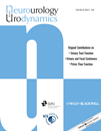Abstract
Aims
Evaluation of the long-term effectiveness of untethering surgery on social adaptations to urinary symptoms at the time of the survey.
Methods
Postoperative analysis of the current activities of daily life implemented as a postal questionnaire survey. Completed questionnaires were returned by 33 of 52 patients with primary tethered cord syndrome (p-TCS) who had undergone untethering surgery more than 20 years ago, including 10 patients with tight filum terminale (TFT) and 23 with cauda equina adhesion syndrome (CEAS).
Results
Long-term follow-up surveys in patients with p-TCS after untethering surgery indicated excellent effects on lower urinary tract symptoms in 9 of 10 patients with TFT, and the progression of symptoms tended to improve or halted in over half of the 23 patients with CEAS. However, one patient with TFT in whom new symptoms of voiding difficulty appeared immediately after surgery and 7 with CEAS showed deterioration of urinary and/or bowel symptoms. Eighteen patients complained of some symptoms caused by lower urinary tract dysfunction after untethering surgery in terms of difficulty in activities of daily life. With the exception of one female p-TCS patient with short stature and low body weight, all data of physical status, as well as educational level, employment, occupational category and marriage statistics were within the normal respective ranges taken from the Japanese census.
Conclusions
Postoperative long-term follow-up survey in patients with p-TCS indicated significant improvement of urological symptoms. However, 55% of patients had some lower urinary tract dysfunction that affected their activities in daily life. Neurourol. Urodynam. 30:1333–1337, 2011. © 2011 Wiley-Liss, Inc.




